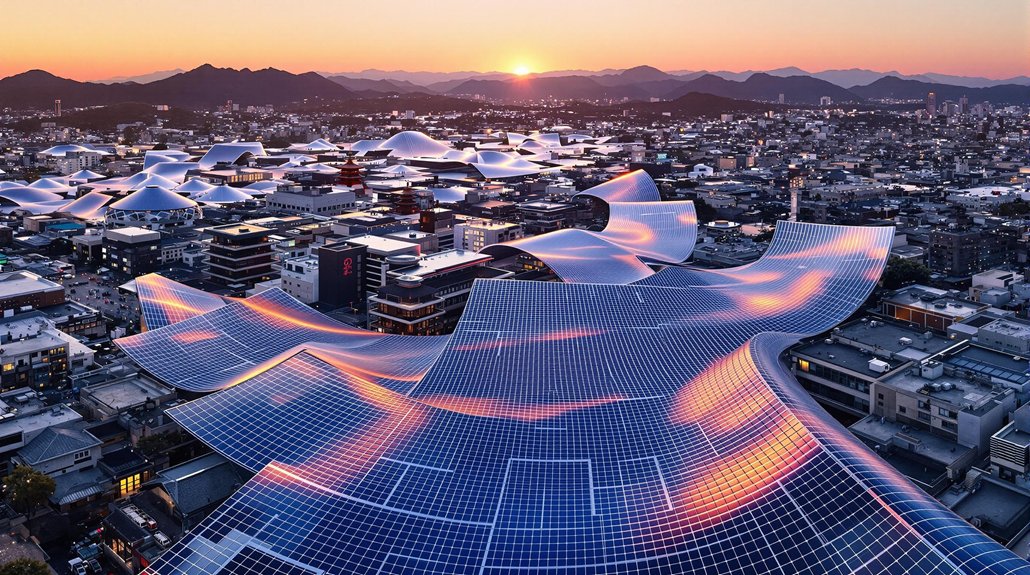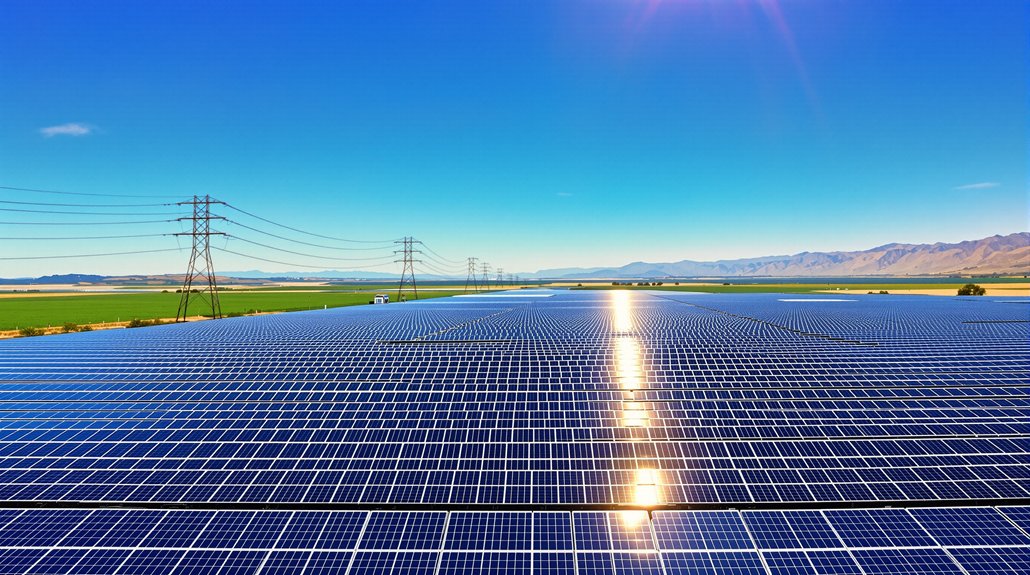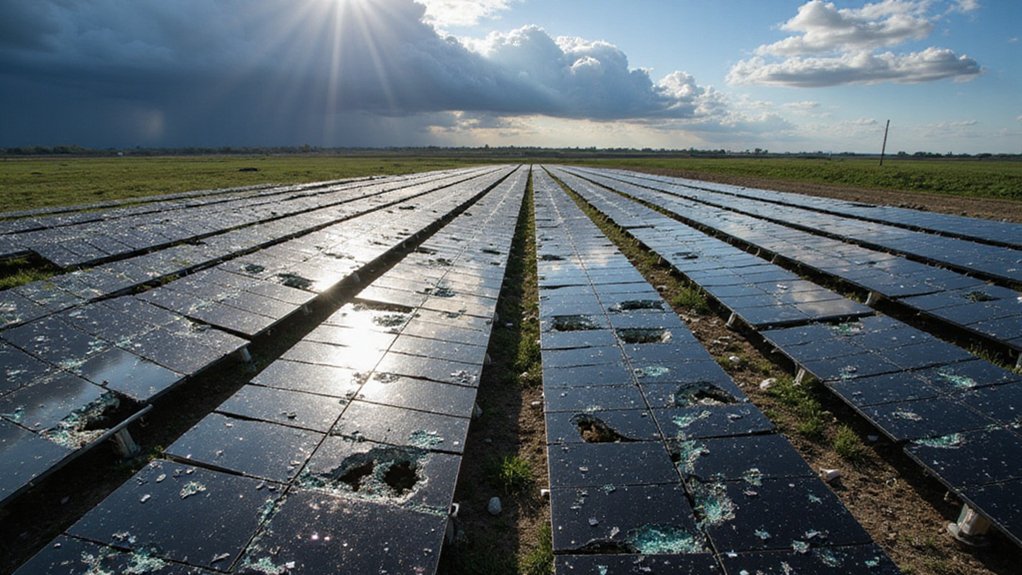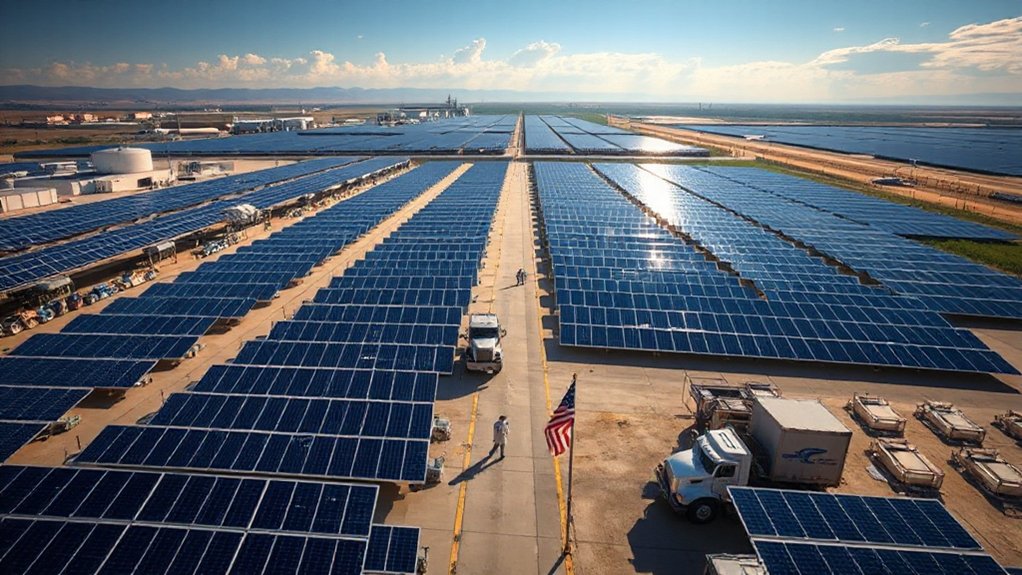Japan’s ambitious solar initiative aims to produce 20 gigawatts by 2040, matching the output of 20 nuclear reactors. The government’s $1.5 billion investment focuses on perovskite solar cells, which are lightweight and flexible. These panels can be installed on buildings, cars, and windows, helping overcome Japan’s land limitations. Despite durability challenges, the technology offers 43% efficiency potential compared to silicon’s 29%. This innovation could transform Japan’s energy landscape entirely.
Japan is making bold strides in renewable energy with its groundbreaking perovskite solar cell technology that could generate power equivalent to 20 nuclear reactors by 2040. This ambitious plan aims to produce 20 gigawatts of electricity and push the country toward its goal of 36-38% renewable energy consumption by 2030.
Perovskite solar cells, first developed by Japanese scientist Tsutomu Miyasaka at Fujifilm, offer several advantages over traditional silicon-based panels. They’re lightweight, flexible, and can be installed on building walls, windows, car roofs, and streetlights. This versatility helps overcome land shortage issues in Japan’s densely populated areas.
The Japanese government is backing this technology with substantial funding. A $1.5 billion investment has been allocated for perovskite solar panel development, with up to $1 billion in subsidies for companies like Sekisui Chemical and an additional $500 million for research and development.
Japan has a natural advantage as the world’s second-largest iodine producer, a key material in manufacturing perovskite solar cells. This approach represents a continuation of the aggressive policy initiatives that were introduced after the Fukushima disaster to promote renewable energy adoption. This could help create an independent supply chain and boost economic security while regaining Japan’s leadership in the solar technology market.
The theoretical efficiency limit of perovskite tandem cells is 43%, markedly higher than silicon-based panels’ 29% limit. This efficiency makes them ideal for Japan’s post-Fukushima energy diversification strategy. The advanced photovoltaic materials in these super solar panels allow for improved light absorption even during cloudy conditions.
However, challenges remain. Perovskite cells currently face durability issues due to their vulnerability to moisture. They also have higher initial production costs compared to silicon-based panels. Full-scale deployment isn’t expected until the 2030s.
Japan’s market share in solar technology has dropped from 50% in 2004 to less than 1% today, largely due to Chinese competition. If successful, this initiative could transform urban landscapes into power-generating hubs and help Japan reach its net-zero emissions target by 2050. With just 90 minutes of the sun’s energy theoretically able to power the entire world for a year, Japan is tapping into an immense energy potential that could revolutionize their electricity generation.
The government hopes these advanced solar cells will not only meet domestic needs but also become a valuable export, positioning Japan as a leader in next-generation renewable energy technology.








